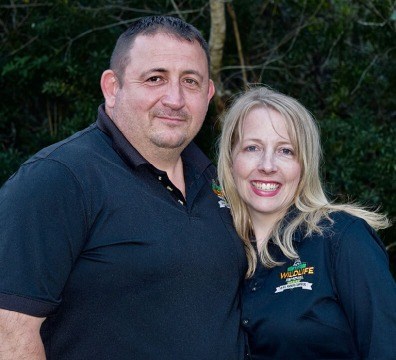Beaver Facts

In these urban areas beavers can cause damage by building dams with ornamental trees and shrubs which often leads to flooding of walk-ways and roadways. They can also build damn within the drainage and sewer system, which, again, leads to flooding of our street and sidewalks. If you suspect you have beavers in your area, or if you are noticing damage along waterways, please call an AAAC Wildlife Removal Professional today in order to remove the beavers in an efficient and humane way, which allows them to be transported to a different area.
The American Beaver (Castor Canadensis)
- Weigh an average of around 60 pounds
- Can be up to 40 inches in length with a tail adding another 8 to 12 inches, making it the largest rodent in North America.
- They have extremely large teeth which are used to gnaw down trees which they use to build their dams.
- Like other rodents, their teeth never stop growing.
- Beavers also have webbed feet which allow them to swim more efficiently and at speeds of 5 miles per hour.
- The most interesting physical appearance feature is the tail of the beaver which resembles a paddle.
- Its tail is very scaly and flat and is around 6 inches wide and an inch thick.
- Beavers use their tails for many different things, including a prop which allows them to balance while on dry land.
- They will also smack their tail on the water, which creates a loud “smack” and warns other beavers that there is danger nearby.
With winter ending and mating season coming to an end, beavers are getting ready to rear their young (kits). The American beaver has a gestation period of around 105 to 110 days and can give birth to an average of 1 to 4 kits around the months of April, May and June. Beavers can also give birth to a second litter of kits, though this is not as common. Right now, beavers are building their “lodges” or dams so that they will have shelter once they give birth.
Beavers can be source of diseases such as Tularemia and Giardiasis. Tularemia can be fatal and Giardiasis can make you seriously ill if treatment is not received. These diseases can be transmitted to humans and to your pets. Make sure your pets have been vaccinated against these harmful and fatal diseases.
Beaver Information
- Baby kits can swim after a mere 24 hours after their birth
- Beavers have a third eyelid which aids them in swimming; allowing them to keep their eyes open under water.
- Beavers can remain under water for 15 minutes without breathing.
- The annual cost of beaver damage is estimated to be around $100 million.
- In the 1900s beavers had about become extinct due to the capturing and killing for their pelts. Their pelts were used for trading in order to make coats, hats, and other merchandise. However, eventually the states began protecting them and their populations began to increase. Today, the beaver is not considered to be an endangered species.
- Do you love ice cream? What about vanilla and raspberry flavoring? Beavers give off yellowish oil, called castoreum which they use to oil their coats and mark their territory. Castoreum is oil that is released from the anal glands and is used in a wide variety of food and drink products. Yes! You read that right; you can find castoreum in tons of common food and drink products as well as in some perfumes. Often times when you see a food or drink product which reads “Natural Flavors” on its label, there is castoreum in the product.









